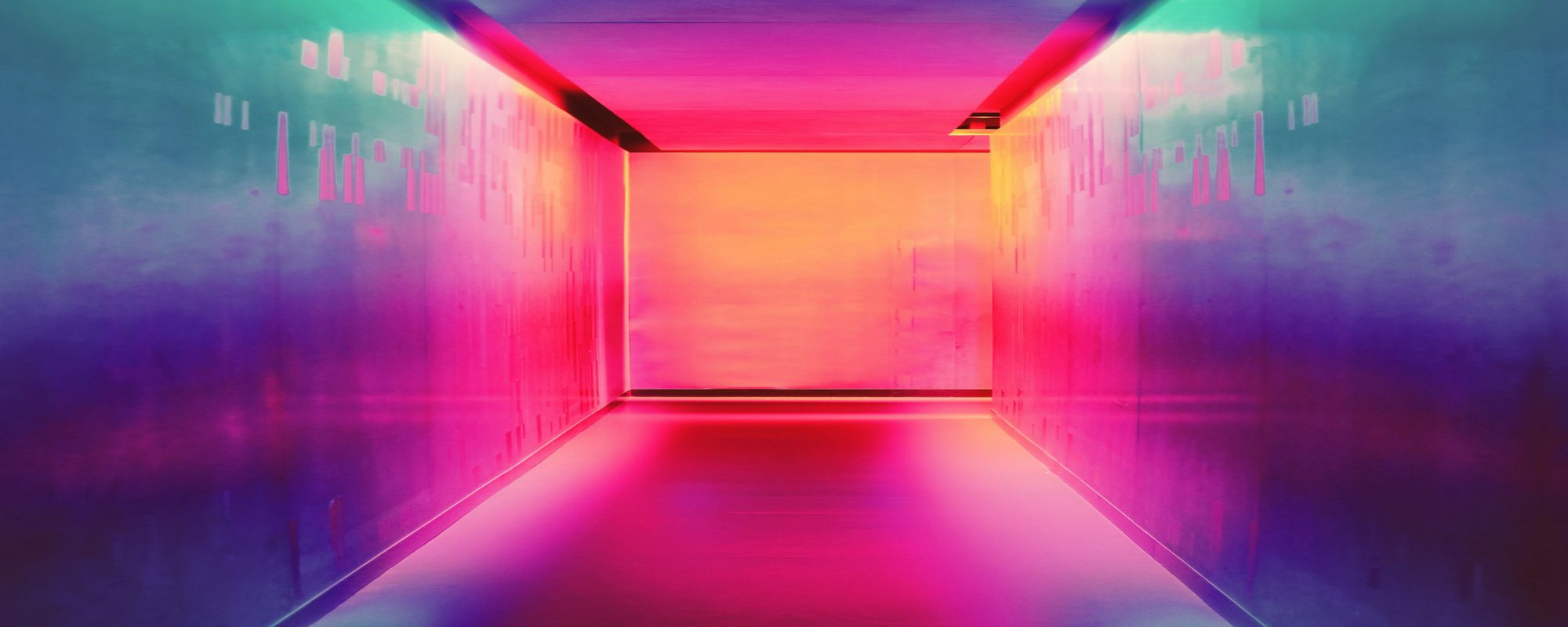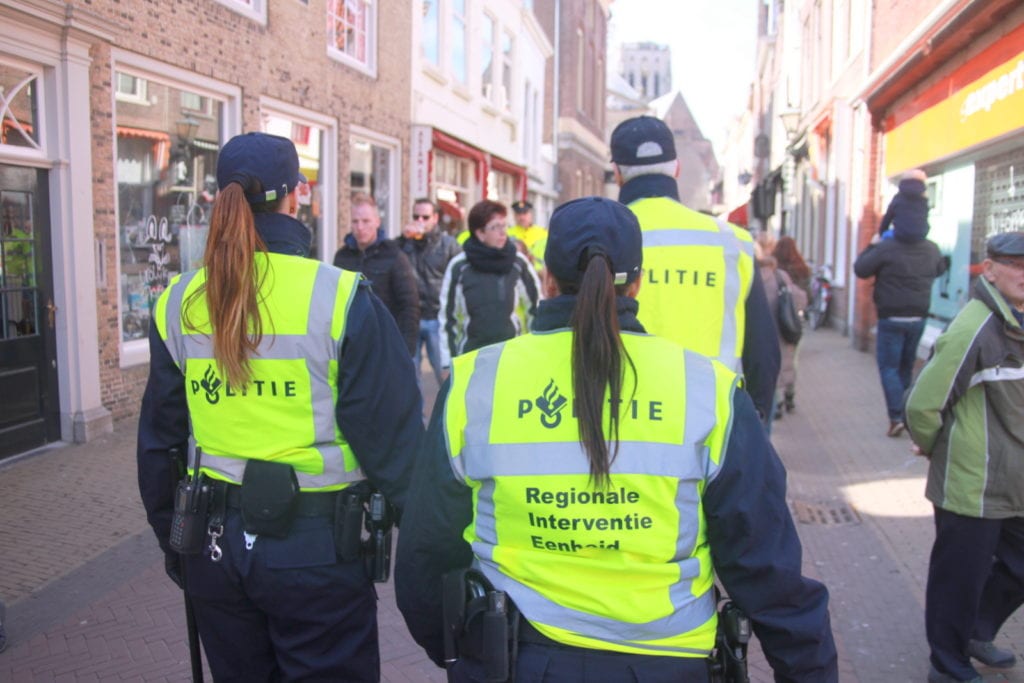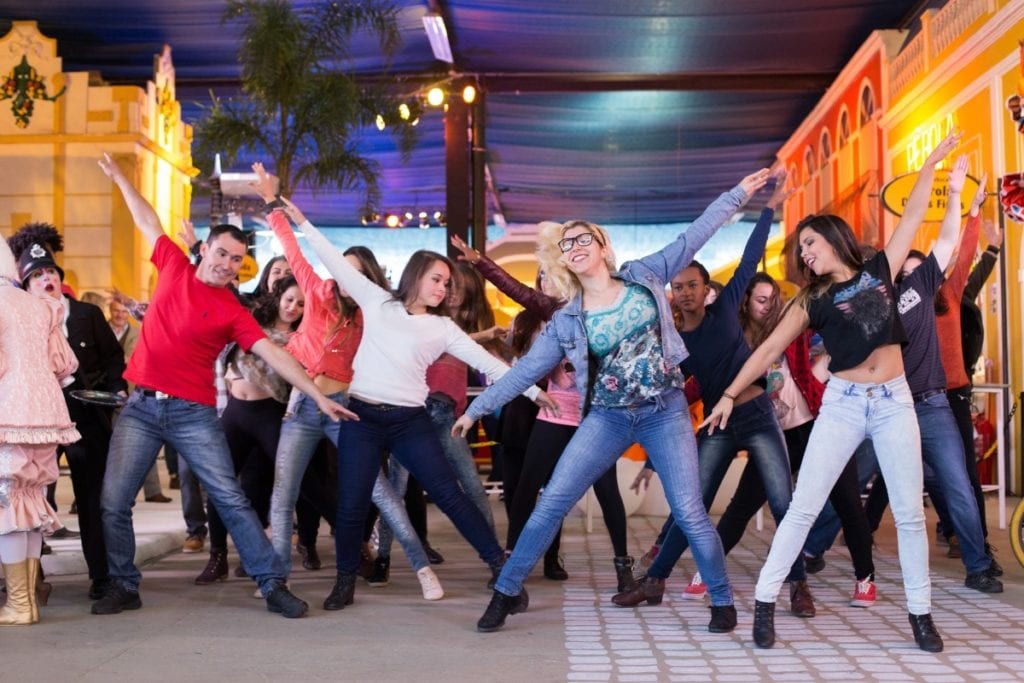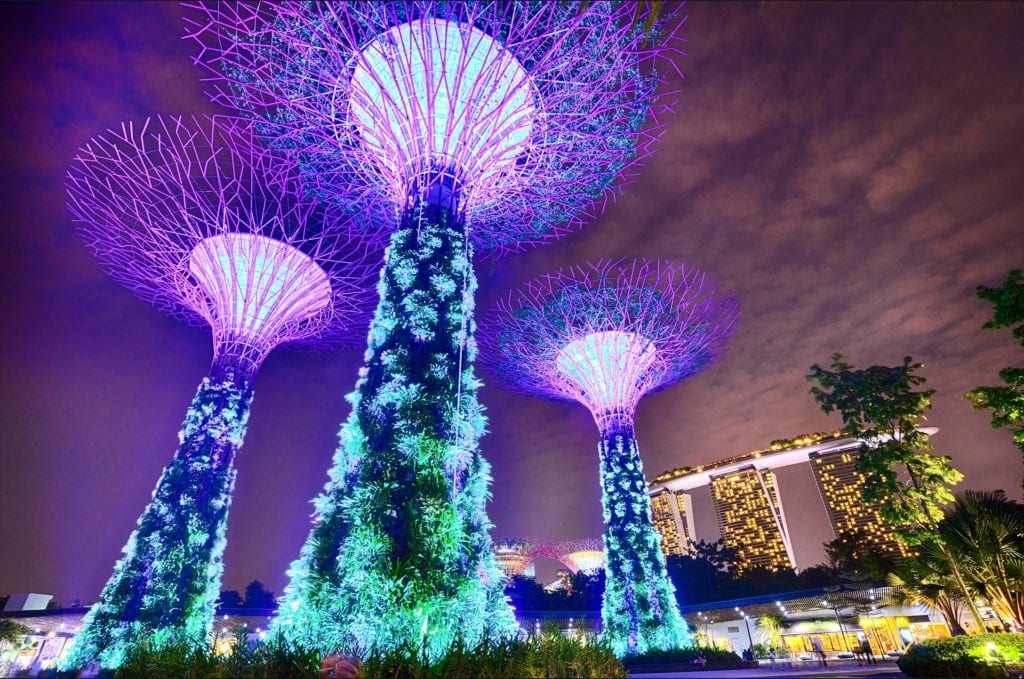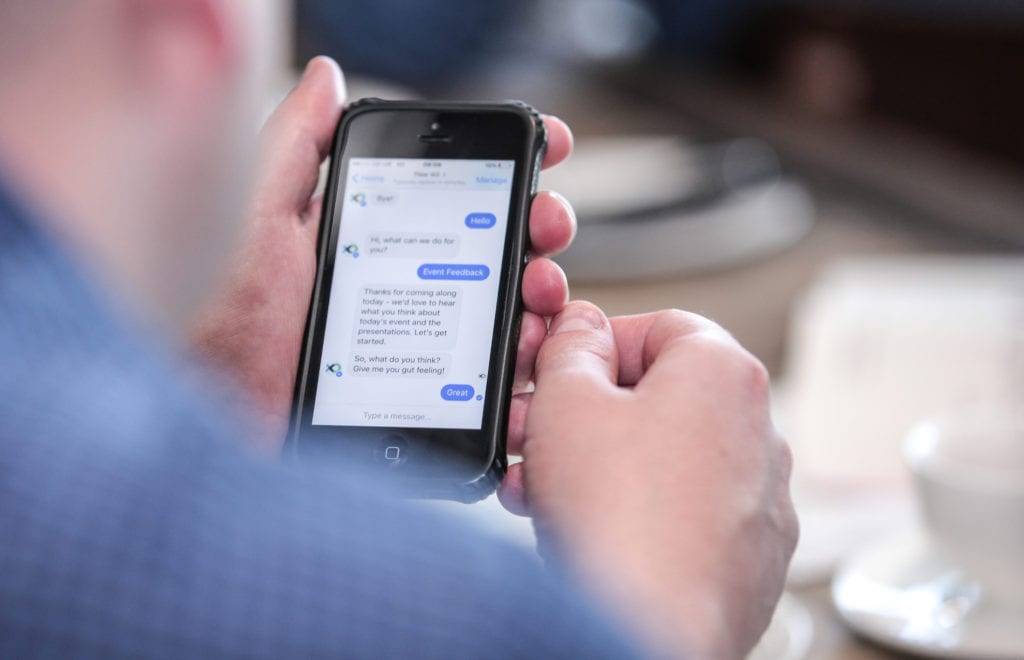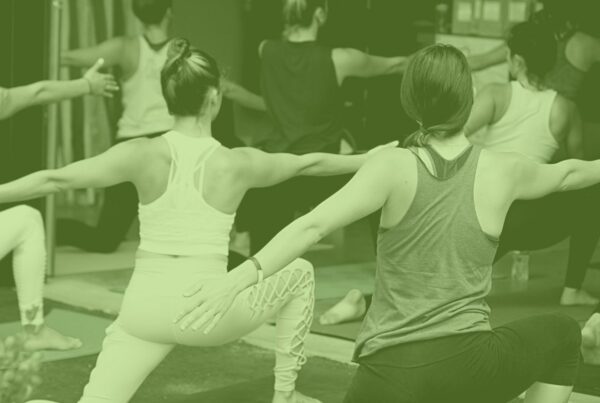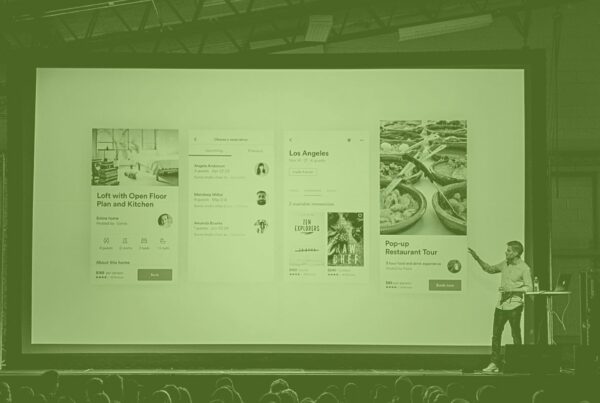Hold up! Why are you looking at event trends from 2018? That year has already passed! Be sure to look at our guide to 2022 Event Trends right here!
The year is almost up, and 2018 is just around the corner. We are seeing 2018 event trends starting to emerge. It’s clear that this past year was an innovative one for the events industry, with technological trends taking center stage in almost all aspects. And yes, there are no signs that the event tech juggernaut will be stopping next year. But that could take a decidedly different route than it had before, based on this new report.
Most of the 2017 event trends were focused on merging the realm of the real and the virtual. Mixed reality is fast becoming an event staple, with new devices that support it becoming available (and affordable) to the public. Touch technology continues to engage our tactile senses, making digital wonders more tangible to event-goers. On-demand services break through the time barrier, and AI technology now has a global presence, from the moment the attendees register to the moment they answer post-event surveys.
Previously novel ideas have also become more mainstream. Crowdsourcing has become the rule, resulting in highly engaging events. Venues have moved away from stadiums and convention centers, and into pop-up spaces and other non-traditional locations. Events are also more fluid, as organizers now rely heavily on data to make real-time decisions to change the course of the event for the better.
Despite all that, the priorities of the events industry have been subtly shifting behind the scenes, and the next year may see something different in the spotlight. While technology will still play a major role in the quest to create a personalized and high-impact experience for audiences, it will likely play more of a supporting role with many events going back to some all-important basics. Recent headlines, for example, have led industry professionals to re-evaluate the matter of event security. The concept of engagement is also moving away from numbers on a chart to live monitoring and real-time adjustments. Let’s have a look at what 2018 event trends have in store for us.

2018 Event Trends:
- Event Safety and Security: Going Back to Basics
- Going All Out with Engagement
- Virtual Attendees Get More Love
- Infusing Local Flavor to Events
- Unique Venues Make Bold and Memorable Statements
- Customization Creates Personalized Event Experiences
- Artificial Intelligence Provides Much Needed Event Assistance
- Big Data and Crowdshaping: The Man Behind the Curtain
- Foster Sustainable Events
- Let them Unplug: Allowing for Mindfulness
- Make Your Event’s “Why” Crystal Clear
Event Safety and Security: Going Back to Basics
The Las Vegas Shooting incident last October has sent the industry into a flurry. Before the tragic event, the idea of event security has been mostly an afterthought. This incident, along with other tragic incidents and with the spate of natural disasters that swept the globe within the year, has made safety and security an important issue for events organizers.
Aside from ensuring that the entire event setup is resistant to the elements and staffed by qualified security personnel, the following guidelines will see a wider adoption in 2018:
- Better coordination not only with local law enforcement but also with experts such as meteorologists to properly gauge safety measures.
- A better focus on event security planning, which includes requiring contractors to produce relevant documents such as insurance certificates.
- The widespread use of technology like in-app crowd trackers, people counters, heat maps that show foot traffic, and more.
Safety and security aren’t just about what goes on during the event physically. A recent uptick in digital exploits has also made cybersecurity measures a mandatory inclusion when planning events. The in-app crowd trackers mentioned above, for example, might contain personally identifiable data that hackers could collect and exploit. On the digital front, we’ll be seeing a few of these event app security measures implemented on the websites and other technologies we use for our events:
- Wider adoption of SSL to secure data access and delivery.
- The inclusion of data management into event plans.
- Actively rejecting data that can be seen as too personal (bank account information, etc.)
- Digital security measures set in place that align with the goals of the event.
- More focus on purging data collected during an event after it’s done versus archiving and storing it.
To learn more about this trend read our recent article on planning a safe event.
2018 Event Trends: Going All Out with Engagement
Of course, the core of any event still lies with the message it delivers (or attempts to deliver, as may be the case). It all depends on how well the event engages its audience in order to drive its message home.
While we definitely look forward to having some high-definition mixed reality experiences this coming year, we’ll also be seeing more events that deliver a holistic experience by engaging all the five senses. Audio and video are staples when it comes to this, but have you ever went to an event that really engaged your sense of smell or taste? In fact, a well-crafted multi-sensory event can provoke interest before, during, and even after an event.
These are just some of the upcoming creative possibilities that can help activate all of your senses during an event:
- Immerse the participants in the smell of the products being endorsed, using scent-generating machines or simply by amplifying the scent of the product.
- Add more hands-on displays that encourage the sense of touch.
- Promote audience alertness by creating multi-sensory recreation in between sessions.
- Take time to select and integrate textures, scents, mood-setting soundtracks, and visual techniques when planning events.
- Integrate creative spaces within event venues to better engage the senses and stimulate discussion during an event.
Virtual Attendees Get More Love
Virtual reality is here to stay but that doesn’t just mean taking event goers to other dimensions. It also means taking others outside the event and letting them to engage as if they were actually part of it in person.
First off, it’s important to define what virtual reality (VR) is in comparison with augmented reality (AR) and mixed reality. Virtual reality is a simulation of a real-life environment, focusing on stimulating the vision and hearing. Augmented reality, on the other hand, anchors these computer-generated images on a real-life object, allowing one to experience the two simultaneously (think Snapchat filters). Finally, mixed reality combines both VR and AR for maximum impact.
Of the three, VR is the easiest to implement. Virtual reality is something anyone with a mobile device can experience. You can use it for marketing and promotions like virtual tours, or product demos, to using it to create an entire virtual experience such as a game.
But one of the most powerful uses of VR is letting people, both speakers, and attendees, to break the barriers of time and distance.
Check out the following VR trends that will see an increasing prevalence this 2018:
- Allow virtual speakers to take the stage. While we already do this to some extent with screens, a 3D visualization adds a certain depth to the speaker’s virtual presence.
- Create virtual meeting places and let virtual attendees actively participate in discussions and the event journey.
- Host digital hangouts that add a new dimension to networking and interaction. These hangouts can be accessed at any time during the event to engage other participants, speakers, and virtual audiences right from your device.
Interested in learning more? Check out our in-depth article on virtual attendance at events.
Infusing Local Flavor to Events
When we hear the words “local flavor”, we often take it to mean letting attendees taste the local cuisine. However, we can go above and beyond just food in the name of creating a powerful event experience.
Local flavor means adding something unique to the location, something that they cannot have anywhere else. Aside from the food, you can add local culture, scenery, history, and more.
However, there are downsides to going local. Trying too hard could result in a bad experience for your audience, especially when they feel that they are being pushed too hard into the local scene. So try to keep the balance between inclusion and localization in your events
Here are some ways that local flavors will play a role in 2018’s events:
- The local terrain will be part of the event’s attraction. Guided tours, dinners, receptions, and more will showcase the best of the event venue. We will see an increase in off-venue experiences.
- Gifts and souvenirs will also carry a local flavor.
- Event professionals will spend more time curating the best local experience for attendees. This will be done by offering travel guides, itineraries, “Best Of” guides, and more.
- Event goers will have opportunities to share interesting local experiences, letting them give off a “wish you were here” vibe to non-attendees.
Check out our guide to adding local flavor at events to learn more tips and tricks!
Unique Venues Make Bold and Memorable Statements
Forever gone are the days when events were confined to four walls. Conventional layouts still do exist, such as theaters and classrooms, and they’re still great for lecture-heavy conferences and workshops. However, these aren’t what you would want for your upcoming events if you don’t want to give your audience a single opportunity to get bored.
Instead, take advantage of unique event layouts and venues, such as cabaret-style locations that foster interaction while giving everyone the space they need. If you need everyone to be close to both each other and a central demo or entertainment, you can also arrange the seats in a herringbone arrangement. Different layouts can serve different purposes as needed by your event.
The 2018 event trends also dictate that the venue itself should reflect the personality, values, and statements of the event. A company with an eco-friendly image would not want to hold an event in an industrial setting, for example. In the same way, a fashion-forward brand would not want to use a common convention center as its event locale.
Ideally, venues should also make an impression immediately, even before one sets foot on the location. These are those venues that integrate an experiential aspect to events. These include unique places like castles and museums. Some extraordinary venues to consider are:
- China’s Shanghai Tower, and its amazing heights.
- London’s The Printworks, with its authentic industrial setting.
- Singapore’s Gardens by the Bay, with its majestic ocean views.
- San Francisco’s Exploratorium and its public laboratory.
To read more visit our blog all about choosing a unique event venue.
Customization Creates Personalized Event Experiences
Events now use tech to gather attendee preferences and discern patterns in activity, letting organizers create a curated experience that ensures maximum impact and engagement for each participant.
Customization also means allowing event participants to direct not just their own journey but also change the event as a whole. Event apps can be used to send questions and prompts, giving the audience the power to influence what happens next.
Here are a few things we will see in the realm of event customization next year:
- Event planners will incorporate new “event paths” depending on audience response to prompts and questions. This means that it’s possible to run similar events but have different experiences in each one.
- Venues will contain more interactive items, from the basic photo walls to digital displays that can be influenced by attendee participation. Look forward to more Tweet walls, LED displays, crowd-responsive lighting, and so on.
- Customization also gives way to comfort, with lounges and various amenities that offer a myriad of activities becoming a common sight in future events.
For more on this topic, jump over to our article all about creating a personalized event experience.
Artificial Intelligence Provides Much Needed Event Assistance
Artificial intelligence (AI) has played a major role in this year’s events, and its dominance will continue well into 2018. Aside from in-venue fixtures that implement AI elements, event goers will also have them in their pockets in the form of event apps and chatbots.
The battle between event apps and chatbots rages on, but ultimately which one you choose will depend on your event and expected audience. Bigger events that need to showcase a lot of material to their audience could invest in a full-fledged app that utilizes an AI to answer the attendee’s common questions. This type of AI can also gather data about common audience questions, helping both identify pain points and provide solutions to them.
On the other hand, smaller events can benefit from chatbots built into the commonly used apps for your audience such as Facebook Messenger. This lets event goers get the same answers to common questions without having to install a separate app. The familiar interface also eliminates any learning barrier.
The following ideas will help push artificial intelligence as a helper for future events:
- On-demand AI will range from a registration assistant to a virtual concierge. It can start as a session reminder and eventually evolve to suggest the best activities to do next, even provide personal assistance.
- Chat AI and event apps will be integrated into each event’s social media strategy. Event professionals will be investing more time in making items more “shareable” online, increasing the reach of the event.
Big Data and Crowdshaping: The Man Behind the Curtain
While we want to empower our audiences, we still want to make sure that we are in firm control of the event’s outcome. Thus, we’re seeing an increased focus on the analysis and interpretation of big data, and the advent of crowd shaping.
Crowdshaping means diverting the crowd of attendees into specific places or experiences in an event to influence their experience. The first step is collecting information. This can range from crowd demographics, answers to survey questions, movement data, session attendance, and a lot more. Afterward, we feed the data into big data algorithms that will translate the numbers into trends and insights.
The tricky part isn’t the analysis though: it’s acting upon the data. That’s why many event planners now use event industry-specific project management software as well. An event organizer can make real-time and data-based decisions based on attendee inputs, both active and passive.
Crowdsourcing is a complex topic but we have you covered, read our in-depth guide on how to use crowd shaping at an event to learn more!
Foster Sustainable Events
Sustainability has also been a trending idea lately, especially since all the negative effects of our unsustainable practices are now coming back to haunt us. Sponsors and brands are now extending their mantra about social responsibility into the events they hold.
One of the most common ways to foster sustainable events is to go paperless. One way is to use digital replacements like apps and emails instead of handing out paper materials such as brochures, schedules, and more. And if you simply cannot avoid using paper, you can also think about using recyclable, recycled or reusable materials instead.
Social responsibility doesn’t stop with simply becoming eco-friendly. You can also include the following activities when thinking about creating a sustainable event:
- Support local businesses by using them as suppliers for your events. This generates job and income for locals and can help showcase the local flavor, too.
- Integrate charitable activities in the framework of the event, and give back to the local community this way.
Not sure how to start implementing sustainable events? Check out our guide to sustainable events!
Let them Unplug: Allowing for Mindfulness
Rest periods are just as important as periods of activity. Downtimes let participants de-stress and process what they have learned during the even
That’s why it’s important to give attendees a chance to rest and to break away from their devices. We expect to see the following trends during events next year:
- WiFi “dead zones” where event goers can go to stay away from tech.
- Comfortable seats, further improved by mood lighting and ambient sounds that promote relaxation.
- Structured breaks that allow attendees to recuperate and reflect on their learnings.
For more information on how to plan an unplugged event and creating a mindful event, read our article planning an unplugged event.
Make Your Event’s “Why” Crystal Clear
While we might know the ins and outs of event planning, one thing we must always remember to communicate well is the “why” of the event. This is something that should resonate throughout the entire gathering. It’s a purpose that should strike the audience as its most memorable feature. Everything else about the event has to point to its “why”.
To the event organizer, this means getting into the mind of the client and understanding their purpose for the event before laying the groundwork. Once you understand the reason for holding the event, let it spread out by providing attendees relevant information beforehand. Then, start building on it through a purpose-focused agenda during the event. After the event, track the engagement of your event goers and find out how well the “why” had stuck with them.
The 2018 event trends we’ve read earlier tell us that this year will be one of purpose-driven and value-added events. Try the following to further enhance your audience’s connection to your event’s “why”:
- Add value to giveaways. For example, print an event overview at the back of nametags to drive home the event’s purpose.
- Share clear and relevant takeaways. Show the audience that their time is valued.
Which 2018 Event Trends Will You Use?
So there you have it, these are the 2018 event trends. They will push the industry forward. There will be a strong need for event safety, new tech trends, and ways to keep your audience engaged.
Want to see how last year looked in comparison? Check out our 2017 event trend blog.
For event planners like you who want to be the innovators of the industry, it’s time to take a close look at each of the above trends and see which ones can implement in your next event. Remember; don’t only do something because it’s trendy, make sure you have a reason, it’s memorable and something with impact.


